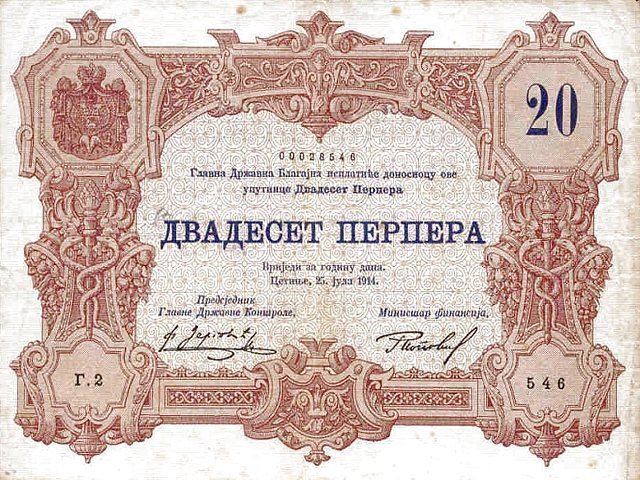1/100 Para | ||
 | ||
20 perper banknote 100 perpera obverse, coin minted in 1910 Plural The language(s) of this currency belong(s) to the Slavic languages. There is more than one way to construct plural forms. Banknotes 1, 2, 10, 20, 50, 100 perpers Coins 1, 2, 10, 20 pare 1, 2, 5, 10, 20, 100 perpera User(s) Principality of Montenegro, Kingdom of Montenegro | ||
The perper (Serbian Cyrillic: Перпер; plural перпери) was the currency of Montenegro between 1906 and 1918. The name was adopted in accordance to the earlier Serbian perper, the currency of the Serbian Empire, to which the Principality, later Kingdom of Montenegro, considered itself a successor. It was divided into 100 pare (singular para, Serbian: паре, пара) and was equivalent to the Austro-Hungarian krone. The perper was replaced by the dinar when Montenegro became part of the Kingdom of the Serbs, Croats and Slovenes (later Yugoslavia).
At the end of the 20th century, Montenegro contemplated issuing the perper again. However, it decided to adopt the Deutsche mark instead, and later followed the change to the euro.
Coins
In 1906, coins were issued in denominations of 1, 2, 10 and 20 pare. The 1 and 2 pare were bronze, the 10 and 20 pare were nickel. In 1909, silver 1 and 5 perpera coins were added, followed by 2 perpera in 1910. Gold 10 and 20 perpera were also issued in 1910, along with very limited numbers of 100 perpera coins.
